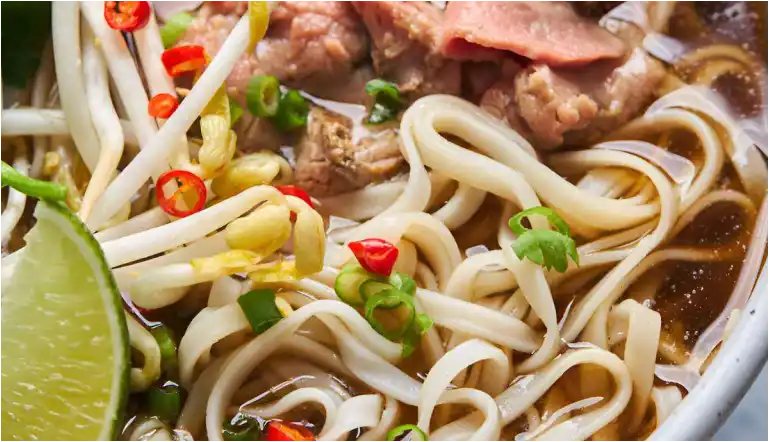For the adventurous eater who loves a variety of textures in their soup, learning how to make pho with beef tendon (Pho Gan) is a must. Beef tendon is a prized ingredient in many Asian cuisines, known for its unique, gelatinous, and melt-in-your-mouth texture when cooked properly. Adding it to your pho creates a rich and unctuous bowl that is a true delicacy for those who appreciate it.
Table of Contents
🤔 What is Beef Tendon?
Beef tendon is the connective tissue that attaches muscle to bone. In its raw state, it is incredibly tough and inedible. However, through a process of long, slow cooking, the tough collagen in the tendon breaks down into soft, succulent gelatin. This transformation results in a unique and highly sought-after texture that is both soft and slightly chewy, with a mild, beefy flavor.
Slow-cooking the Tendon to Perfection
The key to preparing beef tendon is a long and slow cooking process. The tendon needs to be simmered for several hours to become tender. A common and effective method is to parboil the tendon first to clean it, and then add it to your pot of simmering pho broth along with the beef bones. It should be simmered for at least 3 to 4 hours, or until it is completely soft and translucent. Cooking it in a pressure cooker can significantly speed up this process.
🍜 How to Serve Beef Tendon in Your Pho
Once the tendon is perfectly tender, you should remove it from the broth and let it cool slightly before slicing it into bite-sized pieces. It can be served as the star of the bowl in Pho Gan, or it can be included as one of the many different cuts of meat in a special combination bowl, or ‘Pho Dac Biet.’ The soft, gelatinous pieces of tendon add a wonderful richness and a unique textural contrast to the other elements of the soup.
More Topics
- Authentic Italian Pizza Recipe: Pizza with Roman Zucchini and Speck
- Authentic Italian Pizza Recipe: Nerano with Zucchini Cream
- Authentic Belarusian Recipe: Pyzy (Meat Dumplings)
- Authentic Belarusian Recipe: Sukhariki (Garlic Croutons)
- Authentic Belarusian Recipe: Rasstegai (Open-Faced Pastry)
- Authentic Belarusian Recipe: Fried Bread Dough (Pyachysta)
- Authentic Belarusian Recipe: Sauerkraut (Kapusta)

